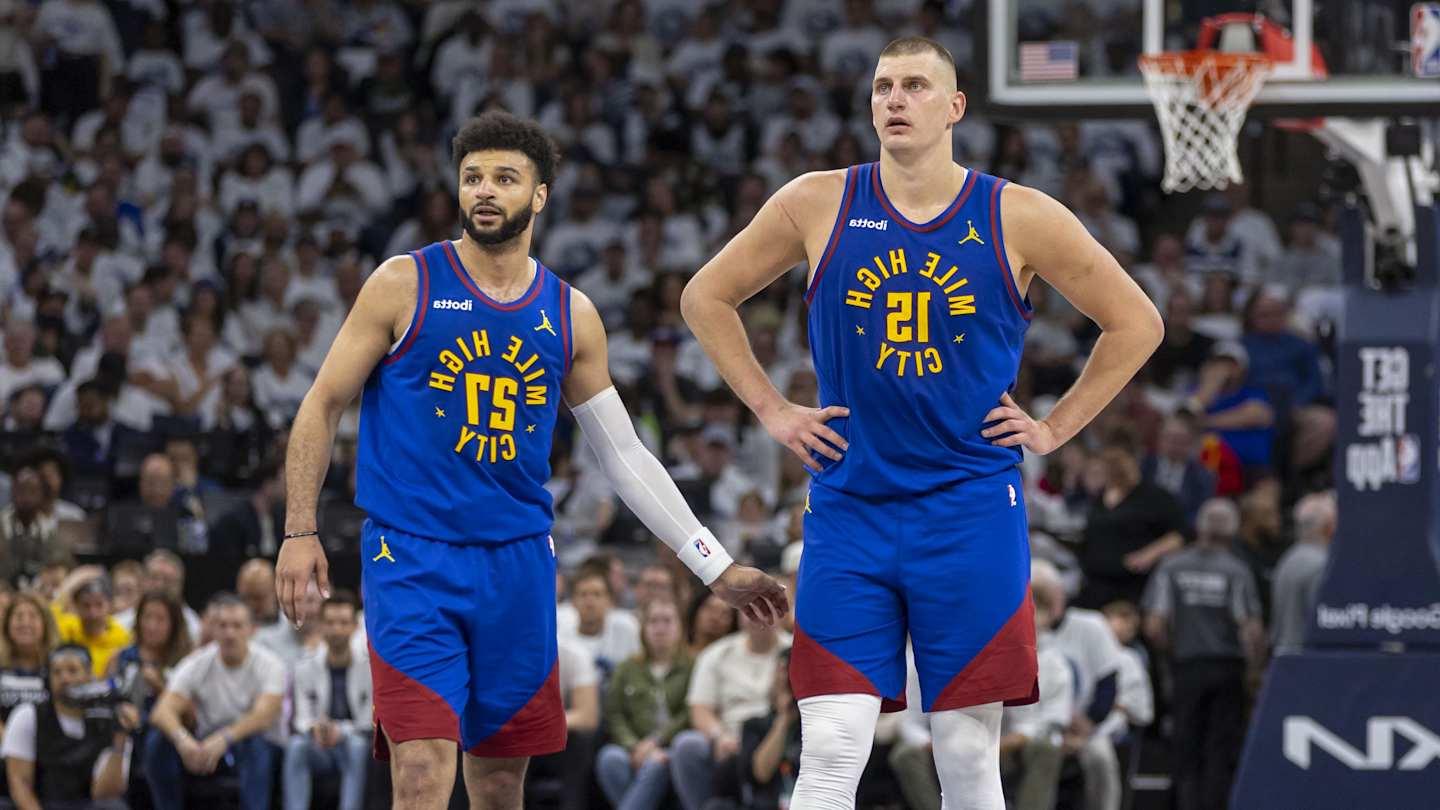Since April, the NBA has been in a constant state of activity. The close of the regular season briefly slowed the pace, but once the playoffs began, a continuous flow of news, transfers, and developments dramatically altered the outlook for upcoming seasons, culminating in the Oklahoma City Thunder’s championship victory.
TubiTV Just Hit 200 Million Users – Here’s Why
10 Perfect-Score Shows Buried on Prime Video Right Now
With the Fourth of July now behind us, the frantic pace is beginning to decrease. The rush from the final game of the NBA Finals through to the 2025 NBA draft and into the free agency period has been relentless. Although some changes are still pending, the key players have already found their spots. The major trades are complete and crucial free agents have signed their deals.
In essence, a significant amount of activity has taken place since the unofficial start of free agency on June 30. With the moratorium ending on Sunday at noon, and the reported signings and trades of the past six days becoming official, now is an ideal time to review and assess all the moves across the league.
The $3.99 Streaming Service With 500+ Oscar Winners Nobody Knows About
Cancel These 3 Subscriptions Before November 1st – Here’s Why
Here’s a look at the biggest winners and losers of this NBA offseason’s free agency.
Winners
Denver Nuggets
The Nuggets managed to improve their roster despite breaking up their championship-winning core during free agency, a difficult balance to achieve. On paper, they have succeeded.
The most significant move for Denver was trading Michael Porter Jr. and a 2032 first-round pick for Cameron Johnson. While Porter was a key player in their 2023 championship run, his inconsistent performance has been a liability, and his $179 million contract was increasingly burdensome. Johnson, who has a similar shooting ability to Porter, is expected to be a better fit for Denver’s needs. Despite playing in fewer games, Johnson’s consistency from beyond the arc is more reliable, which is crucial during critical moments. The trade, although costly with the loss of a future first-round pick, should pay dividends in high-stakes games.
Denver’s offseason was further enhanced by other strategic moves. They re-signed Bruce Brown for a veteran minimum deal, replacing the role previously filled by Russell Westbrook but with better results. Additionally, they traded Dario Šarić’s hefty player option to the Sacramento Kings for Jonas Valančiūnas, potentially giving them the best backup option for Nikola Jokić to date, if he stays instead of moving to play in Greece.
These moves not only bolstered their bench but also replaced the most inconsistent starter with a more reliable lineup. While the games still need to be played, the outlook is positive for Denver.
Damian Lillard
Despite facing a challenging situation with a year-long recovery from a torn Achilles tendon ahead, Lillard finds himself in a relatively favorable position after the Bucks unexpectedly waived him using the stretch provision. Slated to make $113 million over the next two years, he was stuck in an aging team. Now, he has the flexibility to choose his rehabilitation location and, eventually, where he wants to play, aiming for his first NBA championship—a goal that seemed unlikely with the Bucks.
Previously, it appeared Lillard would end his career earning a massive salary in Milwaukee without a real shot at competing for a title, potentially retiring or seeking a championship as a minor player elsewhere. Now, he has the unique opportunity to shape the conclusion of his professional journey, thanks to the Bucks’ strategic decision.
Houston Rockets
The Kevin Durant trade, sealed just before Game 7 of the NBA Finals, stands out as the offseason’s most significant win for the Rockets, making them a serious contender. However, it’s their additional moves that really highlight their successful strategy.
Acquiring Dorian Finney-Smith from the Los Angeles Lakers was an unexpected but valuable move. He steps in as the veteran wing defender, replacing Dillon Brooks, and is known for his positive influence in the locker room—a stark contrast to Brooks. His defensive capabilities are a perfect fit for coach Ime Udoka’s system, and his $44 million contract offers excellent value and trade flexibility.
Signing Clint Capela to a three-year, $21 million deal may not seem like a perfect fit, but it provides valuable insurance if Steven Adams faces injury issues again. Capela adds a different dynamic to the offense as a vertical lob threat, and his presence allows Udoka to explore various double-big lineups. The deal with Fred VanVleet, although less costly, retains a veteran leader and the team’s primary point guard. The only downside was letting go of Cam Whitmore, but given his lack of impact, it’s a minor issue.
While the team isn’t flawless and relies heavily on Durant, who is advancing in age, the Rockets have significantly strengthened their roster, which previously secured the No. 2 seed in the competitive Western Conference, without compromising their core players, Amen Thompson and Alperen Sengun. This is commendable work.
Losers
Milwaukee Bucks
The Bucks found themselves in a precarious position following Lillard’s Achilles injury. With Giannis Antetokounmpo rumors escalating and financial constraints tightening due to high salaries, the team faced mounting pressure to make significant changes. Their response was to use the stretch provision to release Lillard, a controversial decision with far-reaching implications.
While it may have seemed necessary to alter the roster to keep Antetokounmpo satisfied and competitive, the Bucks were limited by their financial situation, primarily due to the hefty contracts of Antetokounmpo and Lillard. Their strategy appeared to be to leverage remaining assets for trades to enhance the team, hoping for the best.
In releasing Lillard and signing Myles Turner to replace Brook Lopez, they aimed to upgrade their lineup. The vision was to pair a younger and more effective Turner with Antetokounmpo’s exceptional abilities to secure a strong playoff position in a less competitive Eastern Conference, where anything could happen. However, the financial burden of stretching Lillard’s contract, which entails a significant annual charge against the team’s salary cap for five years, could severely restrict the Bucks’ future flexibility and ability to adapt if the current roster fails to meet expectations.
It’s difficult to fault the Bucks entirely, given their challenging situation. However, the chosen path places them dangerously close to potential disaster, with little room for error. While they may have gained some leeway regarding Antetokounmpo’s future, they remain on the brink of potential upheaval.
Jonathan Kuminga
This offseason has been particularly tough for restricted free agents due to the lack of available cap space, which usually leads to significant offers that their original teams would then match. This situation is especially disappointing for Kuminga, who has not made progress in securing a new contract or finding a team that aligns with his aspirations to be a primary offensive option.
Typically, players with Kuminga’s athletic profile and potential would attract considerable interest. His desire for a larger role, despite his issues fitting with the Golden State Warriors, would not usually deter teams from pursuing him. However, this year, only the Brooklyn Nets had significant cap space, and they chose not to pursue big signings, leaving Kuminga with limited options.
The lack of interest from other teams, combined with the Warriors’ reluctance to lose him without compensation, has left Kuminga in a challenging position with few clear paths forward. While there is still time for his situation to improve, the restricted free agency landscape has severely limited his options, making this offseason a frustrating experience for him.
Los Angeles Lakers
The Lakers entered this offseason with significant weaknesses in their roster and limited means to address them. Despite having stars like Luka Dončić and LeBron James, they struggled in the postseason due to poor rebounding and defensive capabilities, particularly from their center rotation. Their performance against the Minnesota Timberwolves in the first round highlighted these deficiencies.
The team’s attempts to overhaul the roster
Similar posts:
- 2025 NBA Free Agency: Top Four Teams Shaping the Market!
- Damian Lillard Injury Threatens to End Giannis Era in Milwaukee!
- Damian Lillard’s Heartwarming $500K NBA Champion Bonus Plan Revealed!
- Bucks Coach Doc Rivers Opens Up on Difficult Damian Lillard Call
- Nets Eyeing Future Move for NBA Star Giannis Antetokounmpo

Mike Johnson is a passionate news writer with a keen interest in current events. With over a decade of experience in journalism, he has a talent for uncovering the stories that matter most. Mike’s insightful articles and in-depth analyses have made him a trusted voice in the industry. He thrives on staying ahead of the news curve, providing readers with timely and relevant information. Whether it’s breaking news, politics, or social issues, Mike’s dedication to the craft ensures that his readers are always well-informed.

